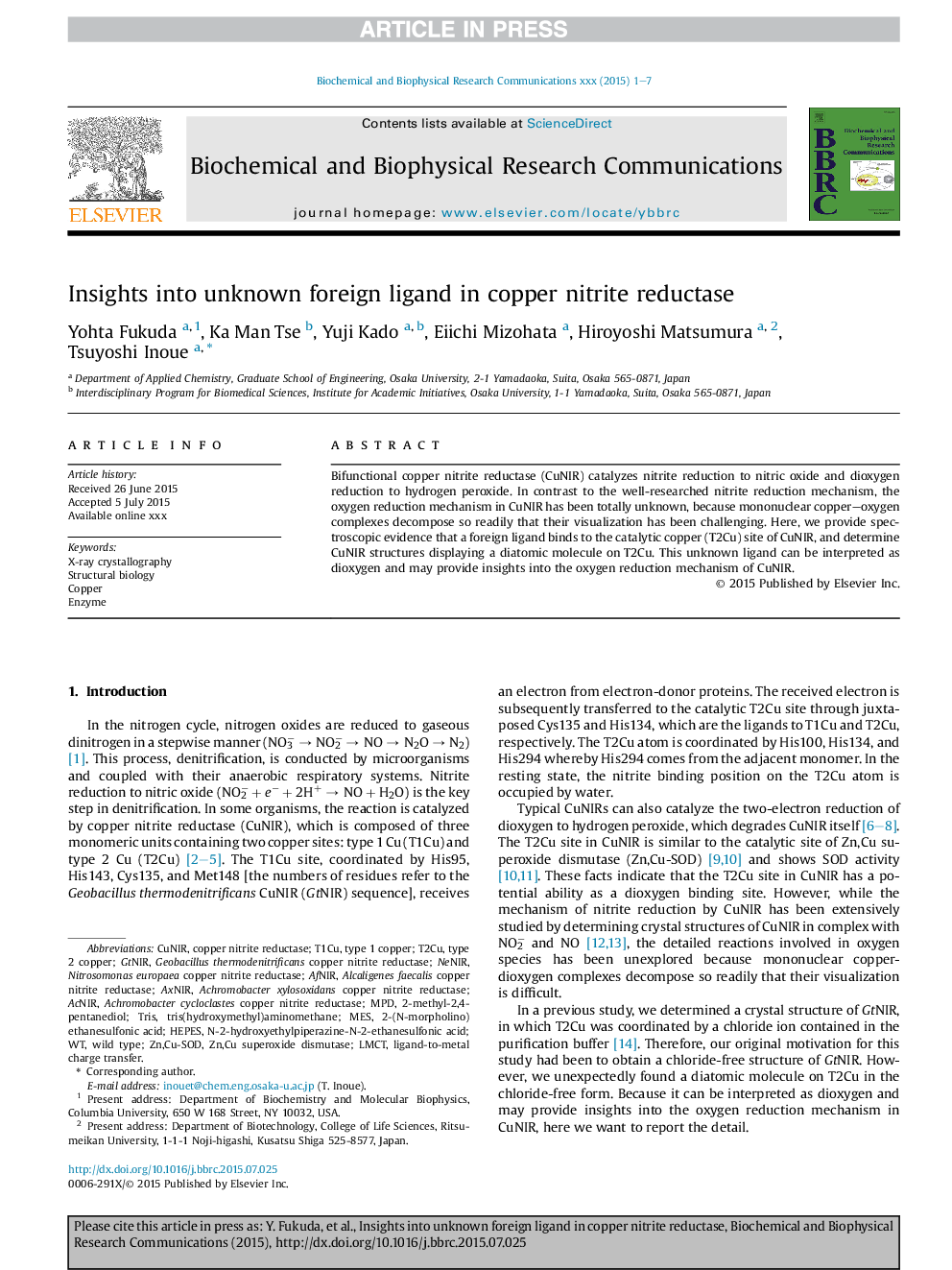| Article ID | Journal | Published Year | Pages | File Type |
|---|---|---|---|---|
| 10751335 | Biochemical and Biophysical Research Communications | 2015 | 7 Pages |
Abstract
Bifunctional copper nitrite reductase (CuNIR) catalyzes nitrite reduction to nitric oxide and dioxygen reduction to hydrogen peroxide. In contrast to the well-researched nitrite reduction mechanism, the oxygen reduction mechanism in CuNIR has been totally unknown, because mononuclear copper-oxygen complexes decompose so readily that their visualization has been challenging. Here, we provide spectroscopic evidence that a foreign ligand binds to the catalytic copper (T2Cu) site of CuNIR, and determine CuNIR structures displaying a diatomic molecule on T2Cu. This unknown ligand can be interpreted as dioxygen and may provide insights into the oxygen reduction mechanism of CuNIR.
Keywords
TRIScopper nitrite reductaseAxNiRCuNiRN-2-hydroxyethylpiperazine-N-2-ethanesulfonic acidT2CuT1CumPDLMCTHEPES2-(N-morpholino)ethanesulfonic acid2-methyl-2,4-pentanediolEnzymeLigand-to-metal charge transferX-ray crystallographyTris(hydroxymethyl)aminomethanestructural biologyCopperMeSType 1 copperwild type
Related Topics
Life Sciences
Biochemistry, Genetics and Molecular Biology
Biochemistry
Authors
Yohta Fukuda, Ka Man Tse, Yuji Kado, Eiichi Mizohata, Hiroyoshi Matsumura, Tsuyoshi Inoue,
